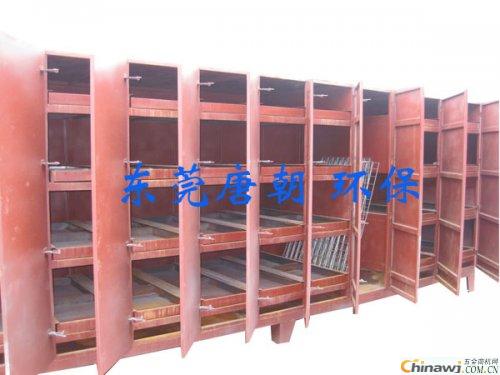At the beginning of the spring, large-area, long-term smog pollution occurred in many parts of China. The main cause of this pollution is that the concentration of fine particles exceeds the standard. Fine particulate matter mainly comes from two aspects: first, fine particles directly released from various pollution sources into the air, including soot, dust, dust, etc.; second, some chemically active precursor pollutants (nitrogen oxides, volatile organic compounds) Etc.) Fine particles formed after the reaction in the air. China Environmental Protection Industry Association news, in response to the recent frequent occurrence of fine particulate matter (PM2.5) pollution, the Ministry of Environmental Protection will soon introduce a series of technical documents, including "General Technical Specifications for Electrostatic Precipitation Engineering", "Adsorption Process Industrial Organic Waste Gas Treatment Project" Technical Specifications and "Technical Specifications for Industrial Organic Waste Gas Treatment Engineering by Catalytic Combustion". It is reported that these technical specifications will be included in the national environmental protection technology standards.
According to the introduction of environmental protection engineering professionals in Dongguan , the above-mentioned specifications will be issued in response to the problem of fine particulate matter pollution, which stipulates the technical requirements for the operation and maintenance of the organic waste gas treatment project of the electrostatic precipitator project and the adsorption method and catalytic combustion method from design to construction. Among them, electric dust removal will become the most mainstream high-efficiency dust removal technology, suitable for controlling the first source of fine particles, that is, smoke dust directly discharged from pollution sources.
Electrostatic precipitator is a type of gas dedusting method. The dust-containing gas is electrically separated when passing through a high-voltage electrostatic field, and after the negative combination of the dust particles and the negative ions, the surface of the anode is discharged and deposited. Used in the metallurgical, chemical and other industries to purify gases or recover useful dust particles. A dust collecting method for ionizing a gas by an electrostatic field to electrically adsorb dust particles to the electrode. In a strong electric field, air molecules are ionized into positive ions and electrons, and electrons encounter dust particles in the process of the positive electrode, so that the dust particles are negatively charged and absorbed to the positive electrode to be collected. It is commonly used in coal-fired factories and power stations to collect coal ash and dust from flue gas. It is understood that electric dust removal is widely used in key industries such as thermal power, cement, steel and other particulate matter emissions. The proportion of dust removal applications in the thermal power industry is as high as 90%. The adsorption method and the catalytic combustion method are the two most commonly used processes in the current VOCs treatment, accounting for about 80% of the implemented projects.
The analysis pointed out that the biggest area of ​​PM2.5 governance in the future lies in the management of industrial pollution sources, and the promotion of electric dust removal as a mainstream technology means that enterprises engaged in electric dust removal technology and process applications will generally benefit.
Search Keyword: Dongguan Environmental Engineering Dongguan Waste Gas Project Dongguan Waste Gas Treatment Equipment 